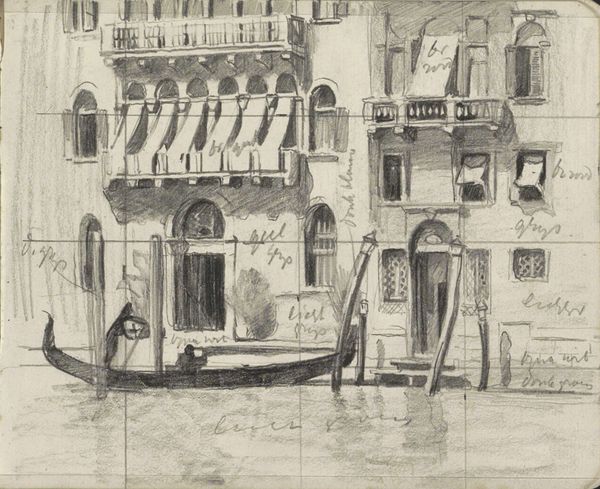
print, etching, engraving
# print
#
etching
#
landscape
#
form
#
line
#
cityscape
#
engraving
#
realism
Dimensions: plate: 25.4 x 30.48 cm (10 x 12 in.) sheet (approx.): 33.02 x 46.99 cm (13 x 18 1/2 in.)
Copyright: National Gallery of Art: CC0 1.0
Editor: Here we have John Taylor Arms’s "Shadows of Venice," an etching and engraving from 1930. The level of detail is incredible! There’s a really dramatic contrast between light and shadow. What stands out to you most about this piece? Curator: The power of the aquatint and engraving lies in its ability to convey atmosphere and memory. Notice how Arms doesn’t just depict Venice, but a feeling of Venice – its weight of history. Consider the recurring motifs of arches and bridges, thresholds. Editor: Thresholds? Like, literal entrances? Curator: Exactly! But also, symbolically, what do thresholds represent? Aren't they passages, transition points between worlds? Venice itself, built on water, becomes a liminal space. Arms, through his meticulously rendered details, hints at layers of cultural memory embedded within the city’s stones. Notice the darkness, does it weigh heavily, or provide needed contrast? Editor: I think the shadows do both, actually. There’s beauty in the details, but it also hints at something darker. What do you think people who knew Venice would have thought when viewing this print? Curator: Perhaps they would recognize the visual shorthand for the city – gondolas, bridges, towers - but more deeply, perhaps they recognize its melancholy grandeur, preserved and also decaying. The shadows here are active participants; they're not just empty spaces. They speak to what's hidden and remembered, perhaps even lost, making this less a depiction and more an emotional portrait of a city. Editor: I hadn't considered the emotional weight of it. Thanks, that gives me a whole new way to think about cityscapes. Curator: Indeed. It's about deciphering not just what’s represented, but the language of how it’s represented – its emotional iconography.
Comments
No comments
Be the first to comment and join the conversation on the ultimate creative platform.













